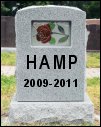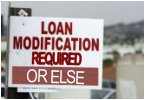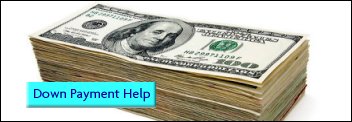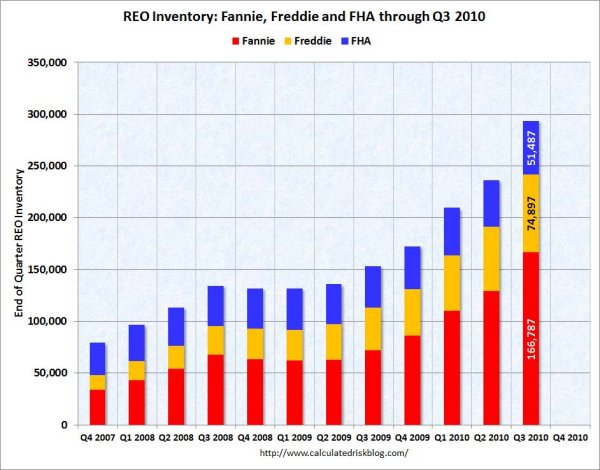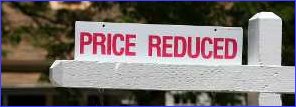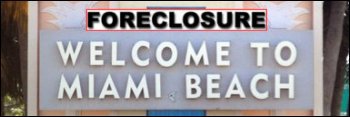
Although in the early stages, the battle lines are already being drawn in the sand over the Presidents reported proposal to force mortgage lenders and servicers to either pay fines of over $20 billion or to modify an equal amount of mortgage loans by writing down the principal balances.
On one side you have the mortgage industry, although yet to receive any proposal from the Obama Administration, they are already sounding the warning bell by claiming that writing down principal balances will do little to help the already fragile market recover and that $20 billion is too high. In support of the banking industry claim, they cite that in just over a year since the government loan modification programs began, loan modifications have done little to stop the foreclosure crisis; despite the fact the mortgage industry has privately modified twice as many loans as the governments crown jewel, HAMP. In the first year alone, 20 percent of all loan modifications have already defaulted again with the government projecting that ultimately as many as 60 to 70 percent of loan modifications will default a second time.
And on the other side, we have the always vocal Rep. Maxine Waters (D-Ca), who claims that the President’s proposal does not go far enough. For evidence, Ms. Waters cites the very liberal Center for Responsible Lending estimates that foreclosures between 2009 and 2012 will result in $1.86 trillion in lost wealth for families.
CoreLogic estimates that the nation has an aggregate negative equity of $744 billion. So what’s $20 billion going to do? If the first thing that came to your mind was “nothing,” then we’ve found some common ground. It’s like using a garden hose to put out a house fire…a drop in the bucket.
But isn’t there a bigger moral issue here? Gee it’s ONLY $20 billion, but who’s going to pay for it? According to “people close to the President,” the proposal is being crafted so the taxpayers will not be on the hook for this one. Does anyone besides me really believe that???
They told us the Healthcare Bill would make insurance affordable. I have to buy my own insurance and I can tell you first hand…there’s no truth in that statement. Every month I get a flyer from Blue Cross. In December, the cost of the lowest plan for 18-29 year olds was $84. In January it was $97, and the flyer I received this month was $111. Seriously, who’s really paying the cost for healthcare reform? You are.
And how are you all enjoying the Dodd-Frank Finance Reform Bill? Free checking? Gone. No yearly credit card fees? Gone. So who paid the cost of regulating the banking industry? You did.
And who do you think is going to pay the cost of this proposal? You will.
Government regulation in the free market place only leads to one thing…higher costs and fees passed down to the consumer…you and me.
But the bigger and more moral question is; should we all have to pay for the bad investment decisions made by other people? That’s right. Bad investment decisions. I didn’t stutter. Oh I’m sure that upset some of you, but that’s exactly what it was.
No matter which side of the political spectrum you are on…you’re blaming the other side for the housing crisis. But when you get right down to brass tacks you’re both right, it was both sides. It was the mortgage industry, mortgage brokers, mortgage banks, Wall Street, the banking industry, the Congress, the President, and the Federal Reserve…all were complicit in the makings of the financial and housing crisis we are all now facing. They knew we were in a bubble and they all just let it ride.
But, oops, we left out one very important person in all of this, the person who sat in that escrow office; pen in hand, buying a home they knew they couldn’t afford. You all hate me now, but it’s the truth. We all know them. They are our sisters and brothers, mothers and fathers, sons and daughters, friends and their families who bought homes they knew they couldn’t afford. And we warned them. Lord knows in 2005, 2006, and 2007, everyone who asked me, I told them, the bubble’s going to burst. And I’m sure most of you heard the same response I got, “That’s okay, when the payment goes up and I can’t afford it, I’ll just sell it.”
No. You won’t. You’ll lose it. And they all did. Everyone I knew who bought a home during those years has already lost their homes. Homes lost to low teaser rates that would never be repaid. But the problem was they all thought that if they couldn’t pay for it, with the prices going up, up, up, they’d easily be able to get out of it…and make money! But homes aren’t piggy banks, as many of you now know. Homes are investments, investments in families, in neighborhoods, and prosperous lives. So many people bought into the hype that prices would go up forever; they forgot that history always proves them wrong.
So now I go back to my original question, should we have to pay for other peoples bad investment decisions made by others? And if we should, shouldn’t we be paid for all of our other bad investments?
Seriously.
Shouldn’t everyone who lost money when Wall Street tumbled in 2009 be reimbursed for their losses? I mean after all, the stock market was being manipulated by Wall Street brokers and our own Federal Reserve, shouldn’t we be reimbursed? My poor dear mother lost half of her retirement in 2009. So she’s a bad investor, but shouldn’t she be reimbursed for something that was beyond her control? But you see, she was in control, she could have invested her money more wisely and gotten out of the stock market…but she didn’t. Just like all those people who could have walked out of that escrow office.
If you walk into a casino and drop ten thousand on a blackjack table, shouldn’t you be reimbursed for making a bad investment? When Toyota’s started accelerating on their own and the publicity hype damaged the value of their vehicles, shouldn’t you be reimbursed for the lost value?
And what about all the people who made good financial decisions? What’s their reward? What about my mother who bought her house in 1983 and didn’t fall for the hype, didn’t sell her house and didn’t buy more house than she could afford? Shouldn’t she be entitled to something for making a good decision? If one person has their principal written down…shouldn’t EVERYONE?
I could go on and on. The real question is; when are we going to stop the bailouts? Because that’s exactly what this is.
And some banking analysts claim there are unforeseen risks. Banks price their products based upon risk. Banks would recognize that they have to incorporate the risk of future levies into the pricing of mortgage credit; possibly causing mortgage lending to come to a complete halt by making it so costly that even less people would qualify for a home loan and forcing the government to assume an even larger role in housing finance. A role they are currently trying to get out of.
What would be the best way for banks to minimize these kinds of risks and penalties? Stop making home loans. Isn’t that what we’re already seeing with the extremely tight underwriting standards that the banks are operating under?
The problem with this plan and all of the other government bailout plans is that it never fixes the problem, but always penalizes the wrong people. Should the millions of people who will get nothing be asked to bear the pain in the form of higher costs and fees for the mistakes of others?
I think not.
Tags: bailouts, mortgage lenders, mortgage industry, mortgage loan, Obama proposal, $20 billion, housing bubble, bad investments



